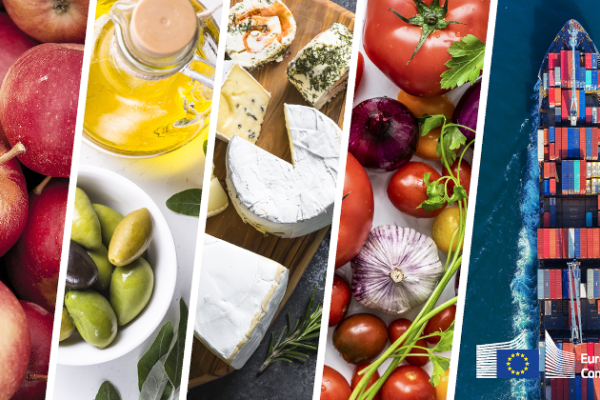Overview
The new delivery model (NDM) is the cornerstone of the new common agricultural policy (CAP) that entered into force on 1 January 2023. It represents a shift towards a strong focus on performance and results, and a rebalancing of responsibilities between EU countries and the Commission, while maintaining the robust assurance system on the CAP expenditure. The NDM takes the needs of each EU country into account and gives them ample room to shape the agricultural policy. While the NDM recognises the specificities of EU countries, it also ensures commonality amongst them.
CAP Strategic Plans
The foundation of the new delivery model are the EU countries CAP Strategic Plans and their well-functioning governance systems. The aim of the CAP Strategic Plans is that EU countries design and target their interventions to address specific needs, at the same time delivering on EU-level objectives.
Performance
With the new delivery model, the CAP shifted from a compliance-based model to a performance-based model with a more streamlined approach that sets targets for the policy as a whole and aims at achieving the results by taking into account country-specific needs.
Therefore, a less detailed set of rules at EU level has been laid down, allowing EU countries to strive towards common EU objectives through their own CAP Strategic Plans that suit better their national and regional contexts.
The CAP legislation has now a common set of indicators for a performance, monitoring and evaluation framework. The indicators will be monitored through annual performance reports to assess the progress of EU countries in reaching their targets and the objectives of the CAP.
In an annual performance clearance exercise, the Commission will check if EU countries expenditure is matched by the realised outputs, while in a multiannual perspective, EU countries achievements of milestones and targets towards results will be followed up.
This focus on the policy performance will also be reflected in the new approach to assurance. As the EU legislation will no longer define detailed compliance rules at the beneficiary level, performance at the national level will be the new source of assurance for the implementation of the CAP.
Eligibility of the expenditure under the CAP Strategic Plan will be conditioned on the well-functioning countries’ governance systems, including the respect of basic EU requirements and matching the expenditure with corresponding outputs.
The Commission has instruments at its disposal to protect the Union budget in case the EU countries expenditure does not have a corresponding output or in case the countries’ governance systems are not functioning properly.
When EU countries are not on track with their performance, the Commission will work closely with them through action plans to bring performance back on track and to ensure the CAP delivers on the EU-wide objectives. There is also the possibility to suspend the reimbursement from the Union budget to the EU country if the action plan is not implemented or if it is manifestly insufficient to remedy the situation.
What’s new?
With the new delivery model, EU countries can customise the support to agriculture based on their needs and the needs of their farmers in view of fulfilling the objectives of the CAP. This also allows reducing the complexity and administrative burden.
The new delivery model promotes simplification by allowing EU countries to shape their own control and penalty systems.
The previous CAP framework relied on detailed requirements at EU level, and featured tight controls, penalties and audit arrangements. The former rules were very prescriptive, down to farm level. In the EU’s highly diversified farming and climatic environment, however, neither top-down nor one-size-fits-all approaches are suitable anymore to deliver the desired results and EU added value.
In the new delivery model, the EU legislation sets the basic policy parameters (objectives of the CAP, broad types of intervention, basic requirements), while EU countries are bearing greater responsibility and will enjoy more flexibility as to how they meet the objectives and achieve agreed targets.
To generate added value and to preserve a functioning agricultural internal market, EU countries are working in the framework of a structured process that materialised itself in the CAP Strategic Plans, that would cover interventions for direct payments, for sectors and for rural development, ensuring policy coherence. The delivery model will thus continue to ensure a level playing field, preserving the common nature and the two pillars of the policy. The approval of the CAP Strategic Plans by the Commission will be with a view to maximising the contribution of the CAP towards the EU priorities and objectives and the achievement of the EU countries’ climate and energy targets. This is important to ensure the maintenance of a common approach to the delivery of environment and climate objectives across the EU countries.
Legal basis
The legal basis for the common agricultural policy is established in the Treaty on the Functioning of the European Union.
The CAP 2023-27 is covered by three regulations, which apply since 1 January 2023:
- Regulation (EU) 2021/2116, repealing Regulation (EU) 1306/2013 on the financing, management and monitoring of the CAP;
- Regulation (EU) 2021/2115, establishing rules on support for national CAP strategic plans, and repealing Regulations (EU) 1305/2013 and 1307/2013;
- Regulation (EU) 2021/2117, amending Regulation (EU) 1308/2013 on the common organisation of the agricultural markets; Regulation (EU) No 1151/2012 on quality schemes for agricultural products; Regulation (EU) No 251/2014 on geographical indications for aromatised wine products; and Regulation (EU) No 228/2013 laying down measures for agriculture in the outermost regions of the EU.
Related links
Overview of aims, history and current rules of the common agricultural policy, supporting EU farmers and Europe’s food security.
A breakdown of key policy areas affected by reform in the new CAP.
The EU ensures that the finances allocated to the CAP are disbursed fairly and effectively.


